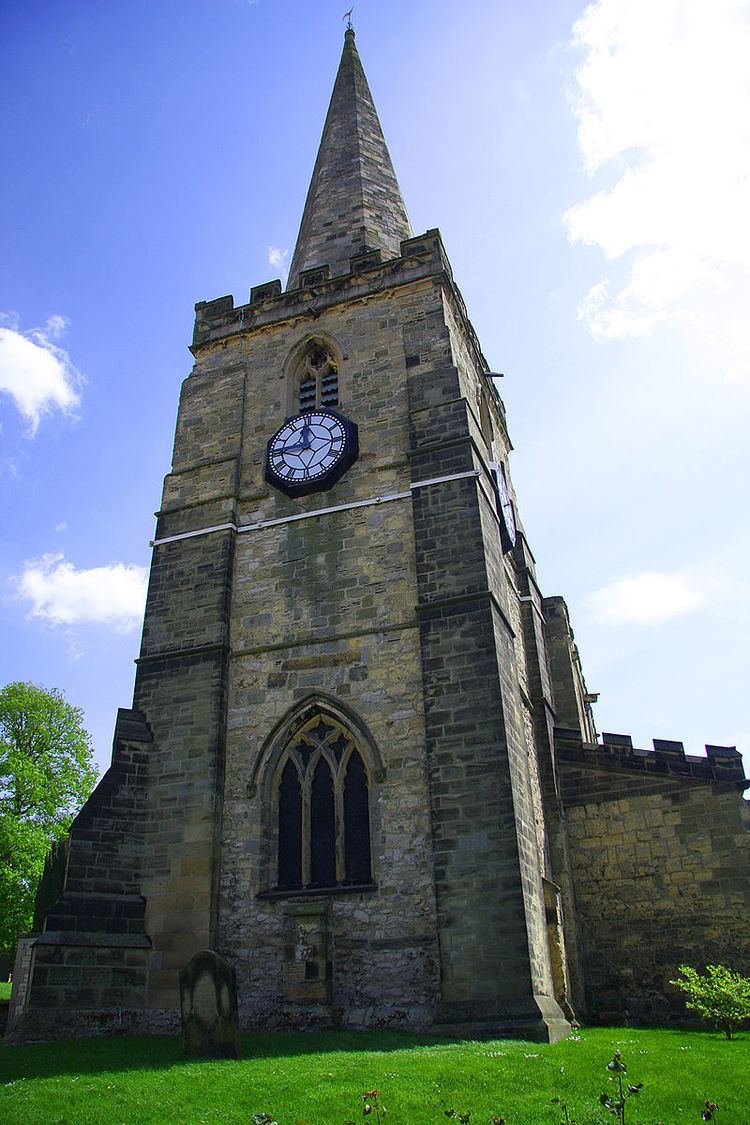OS grid reference SE7988884021 Phone +44 1751 472983 Designated as world heritage site 24 October 1950 | Country England Churchmanship Anglo-Catholic Heritage designation Listed building | |
 | ||
Website www.pickeringchurch.com Similar Pickering Castle, Beck Isle Museum, Pickering railway station, Coronation Chair, Dalby Forest Profiles | ||
The Church of St Peter and St Paul, Pickering is the parish church of the market town of Pickering in the county of North Yorkshire. The church sits on the top of a small hill in the centre of the town and its spire is visible across the Ryedale district. The church is part of the Church of England Diocese of York, and houses a collection of medieval wall paintings. It is a Grade I listed building.
Contents
History and architecture
The first church to stand on the current site is believed to have been built in the Saxon period. Little is known about the Saxon church, but remains from this construction can be seen inside the current building including the stone font and a carved cross shaft. The church was rebuilt in c. 1140, and significant additions were made in the following decades, including a north aisle in 1150 and the south aisle in 1190. In about 1200 drastic alterations were made due to the collapse of the tower, which had until then sat in the centre of the building. The tower was replaced, but with a new structure at the west end of the church, to which the spire was later added. The chancel was enlarged in 1300, in order 'to accommodate the increasingly elaborate church services of the time', resulting in the unusual situation that the east end of the church is wider than its nave. The church features two chantry chapels, which were built to the north and south of the sanctuary: the north chantry chapel, built in 1337, originally contained the effigy of Sir William Bruce, though his remains were relocated to the chancel step in order to accommodate the present organ; the south chantry chapel, built in 1407, contains two effigies, of Sir David and Dame Margery Roucliffe, which are still in situ. The last major structural alterations were carried out in the 15th century when the walls of the nave were raised and clerestory windows added. It was onto these that the church's wall paintings were painted.
Wall paintings
Pickering Parish Church is perhaps most famous for its collection of medieval wall paintings, which follow the medieval liturgical calendar. These were believed to have been commissioned in 1450, but were covered over at the time of the Reformation. Their discovery in 1852 was an accident, caused by plaster falling from the wall. Though he initially had them uncovered, the vicar at the time, the Reverend F. Ponsonby, disliked the paintings and insisted they be recovered, much to the frustration of the then-Archbishop of York. Ponsonby instructed WH Dykes to sketch the discoveries, but then had the images whitewashed. However, in 1876, a new vicar, the Reverend GH Lightfoot, took the decision to remove the whitewash and restore the paintings. The paintings cover the majority of the nave walls and depict scenes from the lives of the saints, the seven corporal acts of mercy, and the passion, death, and resurrection of Christ, together with the harrowing of hell.
